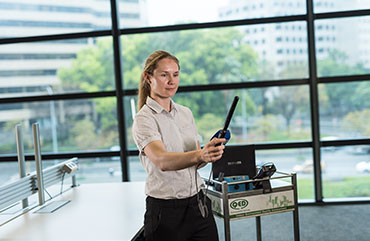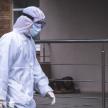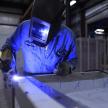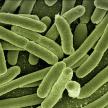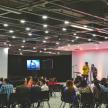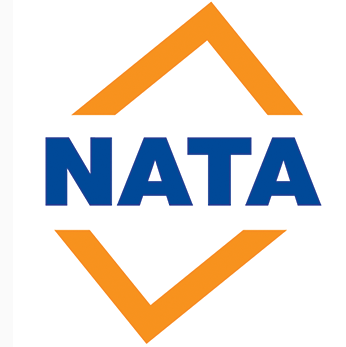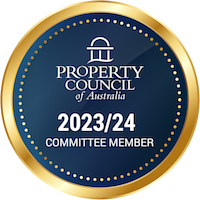COVID-19 Ventilation Risk Assessment & Review in Office Buildings, Schools and Other Workplaces
Ventilation is now recognised as significant for managing transmission risk of respiratory disease (e.g. COVID-19) in workplaces.
Other important measures are vaccination, wearing a mask, social distancing and hand hygiene, which combine with ventilation under the so-called swiss cheese model of transmission prevention.
QED’s approach follows The World Health Organisation’s roadmap and Safe Work Australia’s guideline which each recommend how to assess and improve indoor air quality. The steps are:
- Assess Current Situation (Ventilation Review): mechanical/natural ventilation capacity and performance. Our technician would walk through the premises, noting the intended use of major spaces, and visually assess the air conditioning systems and potential for natural ventilation (opening windows). If spaces are occupied to a normal extent it will be possible to make some spot measurements of carbon dioxide (CO2), a marker for ventilation levels
- Determine the Risk Level (Ventilation Assessment): low risk where the potential for ventilation appears adequate or better; medium risk where ventilation might be adequate though is indeterminable before measurements while the space is occupied; high risk where ventilation is clearly not adequate or is likely to provide poor air quality.
- Recommend Improvements To Ventilation: this could be activating more natural ventilation if available, or increasing the flow of outside air. In older buildings perhaps adequate ventilation will require the mechanical contractor to update equipment, or in particularly closed spaces to introduce air purification equipment
- Ongoing Assurance (Managing your Ventilation System): possibilities are continuous monitoring of CO2 and/or spot measurement of air quality parameters on a scheduled basis (quarterly or annually)
- An optional step, QED can undertake a transmission risk calculation to recommend occupancy level of a space given the observed ventilation capacity and performance.
It is important to note that changes to mechanical ventilation in office buildings, schools and other workplaces may increase energy consumption or impact thermal comfort of occupants, potentially at peak summer and trough winter temperatures. This can occur when increasing outside air involves conditioning a larger volume of air (depending on the latitude of the facility location). Engagement with stakeholders such as tenants and investors may be required.
QED has over 25 years’ experience assisting facilities all over Australia to measure and manage indoor air quality. Whilst the focus on virus transmission such as COVID-19 is new, for years we’ve measured CO2 for productivity purposes using practically identical equipment and methods by our expert technicians.
For more information or to book your COVID-19 ventilation risk assessment for your office building, school or other workplace, please contact us.
Additional Reading:
Guidance Document for Primary and Secondary Schools - COVID-19 Ventilation Optimisation
This document, written from an evidence-based public health perspective, is intended to address the many questions that school administrators have been and will be considering in order to provide appropriate guidance for creating a school setting where the focus can be on education, and not the building itself. It is intended as a resource both for schools, and for mechanical engineering designers and maintenance engineers.
Information on COVID-19 and Building Ventilation
This document, prepared by the WA Department of Health, provides information on the relationship between COVID-19 transmission and ventilation and reflects current advice about the SARS-CoV-2 virus and is aimed at workplaces, public and commercial buildings.
Clearances for Cleaning
At certain times, tenants seek further assurance that their workplace is thoroughly clean, for example to limit exposure to a contagious disease where it is suspected an occupant was infected.
We can undertake clearance testing of workplaces immediately after cleaning or immediately after cleaning then application of disinfectant. Disinfectant should always be applied after first cleaning with detergent for maximum effect of the disinfectant’s active ingredient.
Our clearance methodology involves:
- Understanding the cleaning contractor’s processes and chemicals – we can assist with scoping the clean if required
- Visual inspection for dust and dirt – re-cleaning may be required before further testing
- Swabbing a statistically significant sample of surfaces – the number will depend on the size of the workplace and other factors. In most cases we use an instant ATP test (adenosine triphosphate test). In certain cases, we might recommend bacterial testing, though this is higher cost and laboratory analysis can take up to four days.
Please note: we use the terminology applying disinfectant because a surface cannot within reason be assuredly disinfected. Similarly, analysing swabs for a specific virus, for example SARS-CoV-2, is generally not advised because a statistically valid sample from throughout the workplace would unlikely be feasible.
Looking for More Information?
Head over to our blog and download our free Whitepaper on Cleaning and Cleaning Efficacy.
Or contact us today to book your Clearance for Cleaning service.



